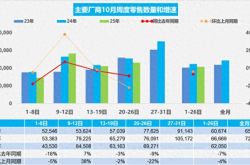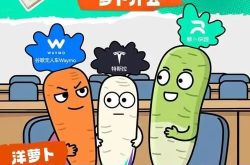From Fragmentation to Integration: The Evolution of Information Platforms
![]() 08/08 2025
08/08 2025
![]() 502
502
The golden age of image-text information platforms appears to have quietly drawn to a close.
In an era dominated by image-text content, official accounts and information apps amassed an unshakable pool of traffic. However, times have changed, and Zhang Xiaolong's prophecy, "Video expression is the core of content in the next decade," has become a reality.
From the technology stack to the product perspective, information platforms, once the hubs for user entry, have gradually become "stalwart defenders of the portal era" – despite the industry seemingly still in operation, with major platforms continuously updating functions, fine-tuning channels, and revising operations, these patches have consistently failed to reverse the tide of time.

Fortunately, a variable that may truly determine the future direction of information platforms is gradually emerging – AI.
AI's impact on the image-text information track extends beyond simple algorithm iterations or product form innovations; it rewrites the entire content consumption logic. Against this backdrop, information platforms are poised to reclaim their rightful place.
However, this time, they must leverage a new set of capabilities to answer an old question: in an era where information has long been overwhelming and the significance of news has gradually faded, how to re-assign it a reason for existence.
Why is the "another technological revolution" of information platforms different this time?
In fact, few content tracks are more accustomed to being repeatedly reshaped by technological cycles than information platforms.
Looking back at the development history of information platforms, from portals to apps, from manual editing to algorithm distribution, information distribution models have undergone several generational changes.
At the end of the last century, the "classified directory + portal" era gave rise to traditional portal websites like Tencent, Sina, and SOHU; subsequently, search engines emerged, shifting the paradigm of information acquisition to the "search era"; afterwards, under the wave of Web2.0, social media and subscription following gained popularity, allowing users to bypass portals and obtain information directly from the source; until the 2010s, when personalized recommendation algorithms emerged, information streams became mainstream, and platforms like Toutiao rose to prominence relying on intelligent distribution.
It can be said that information platforms have always been at the forefront of technological shuffles and are no strangers to them. In fact, "technological shuffles" are the most anticipated narrative theme in this track and the underlying variable that enables many platforms to rise against the tide.
For example, the evolution of each information distribution model has been accompanied by the reshaping of the business landscape – new technologies give birth to new models, which often "eclipse the previous generation of overlords" through more efficient content supply and business innovation.
However, this technological revolution is distinctly different from the past.
In the past, every innovation rode on the crest of user growth and traffic dividends, so technological iterations often led to rapid expansion of the industry landscape and a dividend frenzy. To compete for the window period, platforms even resorted to subsidies and launched massive traffic wars.
Currently, the information industry has already entered an era of stock competition: incremental users have peaked, total usage time has been seized by powerful competitors, and platforms are competing for limited user attention stock. A QuestMobile report once pointed out that the information service industry has shifted from "traffic growth" to a new stage of "traffic operation".
In other words, information platforms no longer have the favorable winds of "easy wins" like in the past; instead, they face the pressure of "rowing against the current, or being left behind." Against this backdrop, even with AI driving it, it is almost impossible for them to replicate the "golden age" of wild growth in the past.
In other words, AI is not a "miracle drug" for information platforms to rejuvenate and soar; it is more like a desperate fight for survival.

Therefore, this AI-driven transformation is far from the "minor repairs and patches" of previous years; it is not simply about optimizing the recommendation model or creating a few fancy new features. Rather, it is a fundamental reshaping of the basic logic of information products, involving the triple reconstruction of core elements such as content production, distribution mechanisms, and user relationships.
Triple Reconstruction of Content, Distribution, and User Relationships
If we say that in the past decade, the general structure of information platforms was humans writing, machines pushing, and users reading – with clear relationships and boundaries between the three. Then the true upheaval brought by AI is to dismantle and reassemble this seemingly stable structure, thereby better answering the three core questions of how content is produced, how it is distributed, and how it establishes connections with users.
On the content production side, although AI has never replaced human content creators, it has deeply "intervened in shaping" them.
In the past, manual creation was a stable production paradigm – authors wrote drafts, and editors adjusted and proofread them. However, as AI gradually gains abilities such as generation, rewriting, summary extraction, and image-text matching, content production gradually becomes a collaborative effort between humans and machines.
Taking "light content" as an example, the current industry practice is to generate a first draft based on specific viewpoints using a large model, which is then polished by humans, improving production efficiency and reducing the risk of errors. For example, on platforms like Tencent News and The Paper, AI handles multiple auxiliary tasks such as title optimization, typo correction, image matching, and summary extraction.
The introduction of these capabilities has made human-machine collaborative content production the norm – machines provide density and efficiency, while humans retain perspectives and judgment.
But the "reconstruction" of content is just the beginning; AI's deeper intervention occurs in the deconstruction of the distribution system.
Once upon a time, algorithm recommendations based on interest tags were regarded as the golden rule of content distribution – what you click on, where you stay, and how long you read determine what the platform feeds you. Facts have proven that this mechanism has been unstoppable in the past decade, nurturing the golden age of image-text information and enabling short video platforms to build deep interest pools.
At the same time, however, it also laid the hidden danger of platforms becoming increasingly "echo chambers" – users are exposed to homogeneous and confirmation-biased information streams for extended periods, gradually losing their ability to actively discover.
AI's intervention breaks this traditional feeding structure: the path for users to "find content" has been significantly broadened – information acquisition has shifted from passive acceptance of recommendations in the past to two-way flow.
Even Douyin recently announced that its algorithm no longer relies solely on existing interests and historical behavior but introduces more dimensional information to present diverse content to users, technically alleviating the problem of information silos.
In the image-text information track, players like Tencent News are also exploring the use of AI to reshape the distribution system. For example, by using dynamic interest modeling to make recommendations escape static tags and perceive real-time changes in user preferences; content understanding has also evolved from shallow interest classification to deep portrayal based on value preferences.

This shift aims to break free from the algorithmic inertia of blind catering and reopen the width and depth of the information world for users.
Furthermore, information inherently carries companionship and tool attributes for users. Therefore, while AI strengthens connections with users, it also maximizes the role of information platforms as "tool people."
For example, NetEase News' AI commenting feature is quietly changing user interaction patterns. Imagine this scenario: after reading a report, click on an AI icon next to the comment box, and the system immediately generates three styles of comment drafts – rational, humorous, or sharp. Users can select and publish with one click, making "posting a comment" no longer a burden but an expression experience triggered at any time.
Tencent News also brings AI to the comment section – AI first understands the article and each comment, then transforms into a high-EQ, energetic, and sunny "old friend" who responds to users with heartfelt words, adding a touch of human warmth to cold information.
At the "companionship" level, platforms like Sina News and Tencent News are also embedding AI assistants into the daily interaction of information products. The former realizes full-process assistance through "Wisdom Xiaolang" for topic recommendation, intelligent summarization, instant Q&A, etc., while the latter provides functions such as word highlighting for questions, AI summaries, and chatting while watching with "News Girl" – a framework for an "ubiquitous AI assistant" is taking shape.
Other functions are all aimed at being "fast, accurate, and usable" – amplifying the tool attributes of the platform itself. For example, in Tencent News live broadcasts, for common English original sound content in finance, technology, and other fields, AI can generate real-time Chinese and English subtitles or translations, eliminating language barriers.
In fact, several years ago, the industry began to consider returning news clients to their tool attributes. Tencent internally developed a news assistant codenamed "DreamReader," which integrates voice interaction and text reading functions and can automatically broadcast news bulletins generated by "DreamWriter."
And in the era of AI, this idea is even clearer. Information platforms do not have to compete fiercely for user time like short videos but should strive to help users efficiently obtain valuable information – the true value may not lie in keeping users longer but in allowing them to leave with answers faster.
From "Instant" to "Precipitation": A Rewrite of Value Logic
In fact, information platforms have always had traffic but rarely truly owned "content assets." This is not because information platforms lack content; the real problem lies in the short lifecycle of information content, which fails to form structural memory.
For example, image-text information platforms display a vast amount of news daily like a carousel. If a piece of news is not fully consumed within 24 hours, it is almost destined to be "sunk" by the platform mechanism.
And a complex event spanning multiple months and involving multiple parties is often sliced into dozens or even hundreds of isolated pushes, with timelines, causal relationships, key subjects, and public opinion inflection points all scattered. Readers often only remember fragments and struggle to piece together a complete picture.
This production model of nearly "one-time content" makes it difficult for information platforms to accumulate content assets – news is constantly being produced, and once it passes its timeliness, it is shelved, failing to truly build content barriers.
The arrival of AI makes "memory" possible for the first time – in-depth integrated reports that once required investigative journalists to repeatedly verify, arrange, categorize, and write can now be partially realized by AI through cross-verification of multiple sources of information, becoming systematic and scalable.
Tencent News is an example. With AI, after each hot news, it can generate a brief summary presenting key information and more accurately push related reports; below the news is the "Event Timeline" function – laying out the timeline, character relationships, and core disputes, allowing users to sort out a complex news story within minutes.

If users are still interested in the subsequent development of the event, they only need to leave keywords, and AI will customize an exclusive morning newspaper based on this: accurately screening and sorting out the most relevant information from the vast information stream and delivering it to users daily. It is reported that the AI morning newspaper goes beyond news itself, continuously tracking specific companies, industries, or even vertical topics, building a long-term and dynamic information entry for users.
On the other hand, in professional verticals, the semantic understanding and information integration capabilities of large models are enabling information platforms to organize previously fragmented information into a knowledge system that can be consulted and accumulated for the first time.
Taking Tencent News' "Finance Assistant" as an example, around a company, the system can automatically integrate its financial reports, executive statements, M&A dynamics, and regulatory responses, packaging them into a continuously updated database. Users no longer need to search everywhere; they can simply click on the assistant to get an overview of a company's performance trends or public opinion changes. Similarly, platforms like Daily Economic News have also launched intelligent financial report analysis tools, enabling financial information to move from "viewing" to "using."
Once information is structured and "remembered" in this way, it leaves a permanent value imprint on the platform, which can repeatedly play a role in future algorithm recommendations or user active searches.
AI serves as a catalyst and multiplier for unlocking content value. It adeptly integrates fragmented information, bestowing information with enduring vitality—the significance of content is no longer constrained by timeliness. Through product applications, AI transforms premium data into long-term assets under a strategy of high-quality content, continually unlocking its multiplicative potential.
When the value of content can be crystallized, platforms can construct their own content assets and knowledge graphs, thereby rewriting their value proposition—image-text information transcends being a mere consumable in a one-time transaction, becoming an asset that can be accumulated, reused, and continuously appreciated.
Structuring does not imply abandoning immediacy; rather, it adds a layer of value crystallization to information platforms.
In the long run, this represents a sustainable value and one of the few avenues for information platforms to regain prominence amidst the onslaught of short videos.
Undoubtedly, this transformation has commenced and is progressing at a rapid pace. These ever-evolving players are poised to achieve self-redemption in this new cycle, uncovering fresh possibilities for the information industry.








